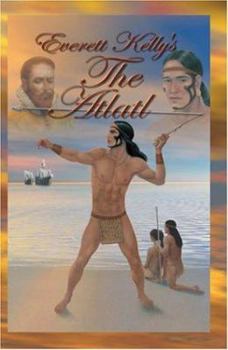Everett Kelly's The Atlatl
Select Format
Select Condition 
Book Overview
This is the story of a nation of people who inhabited the southern third of Florida When Columbus first touched the shore of this new world. They earned their moment in the history of the world by... This description may be from another edition of this product.
Format:Paperback
Language:English
ISBN:1589395603
ISBN13:9781589395602
Release Date:April 2004
Publisher:Virtualbookworm.com Publishing
Length:280 Pages
Weight:0.91 lbs.
Dimensions:0.6" x 6.0" x 9.0"
Related Subjects
HistoryCustomer Reviews
1 rating
The Atlatl
Published by Thriftbooks.com User , 16 years ago
The Atlatl reviewed by J. Robert Brown (2006) (Review first appeared in Whispering Wind magazine -- used with permission of the editor and owner of Whispering Wind magazine) Atlatl - an atatl is a spear, which is thrown with the aid of a sling or wooden rest so the thrower can give more thrust to the spear I had not thought of or heard this word since I first came across it in an American Indian Cultures class at the University of Missouri-Columbia in 1968 until just a few months ago - in that class, I learned all sorts of fancy words that anthropologists have come up with for Indian things that I had been calling something else. In fact, over the course of my many years of studying and writing about the American Indian, atlatl isn't a word that comes up all that frequently in the circles that I typically find myself. Most people can tell you about bows and arrows, skull crackers, war clubs and the like but the atlatl isn't something that comes up very often even among students of native ways. While on a recent business trip to central Florida, I became acquainted with a gentleman who has not only done quite a bit of research on the atlatl, but has written a book called "The Atlatl." This is how the book came to my attention. But more on the personal side of this book and it's author later. This fascinating book is the story of a nation of people who were living in the southern third of Florida when Columbus showed up in the New World. It is the story of a nearly forgotten group of Indians nicknamed "The Shell Indians" - properly though, called the Calusa (or Caloosa) who lived primarily on the sandy shores of the southwest coast of Florida. The Calusa shell mounds are still found in Florida - the Calusa used shells for tools, utensils, jewelry and ornaments for their shrines - they used shell spears for fishing and hunting. It was about the year 1513 when Spanish explorers wrote home about this tribe. Much of this book's charm and fascination comes from the fact that it tells the story of native peoples prior to and during the first contact with Europeans - this is a subject that few people know much about. The Calusa apparently died out in the late 1700s or were captured by enemy tribes from Georgia or South Carolina and perhaps sold as slaves. Some think a few Calusa left for Cuba sometime around 1763 - these people were perhaps the last native Florida Indian people to succumb to colonization. Some of the customs, traditions and culture can still be found in the Seminole and Miccosukee peoples. The author starts the tale in about 1490 in the village of Senquene on the lower west coast of Florida. While this is a fictionalized story telling actual historical events, the reader is captivated by the personal lives and problems of the characters and yet all the while you realize that outside events are darkening the future of the Calusa. The main character is a warrior named Yahati who falls in love with the woman, Inini from a neighboring





